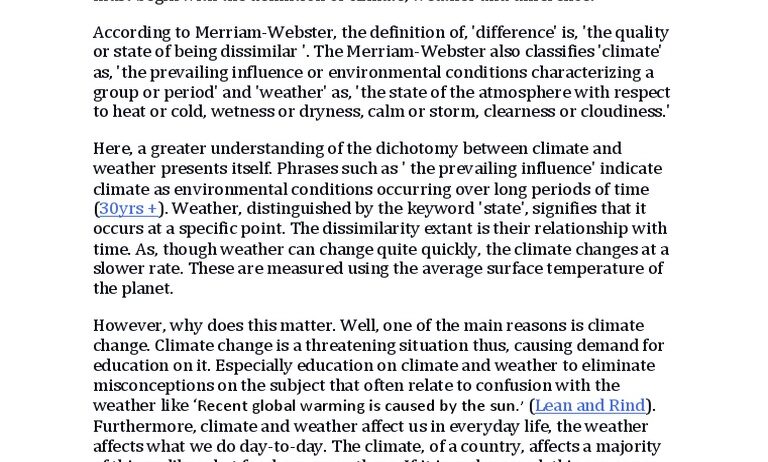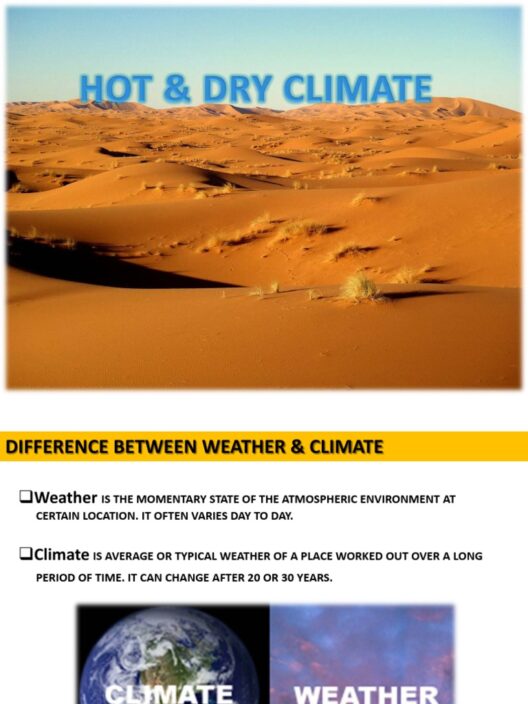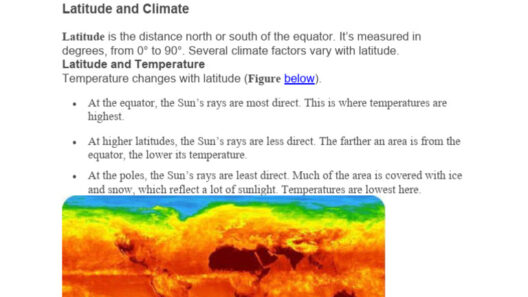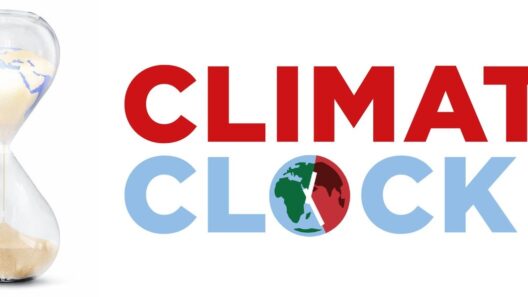In the ever-evolving discourse surrounding climate change, terms like “climate” and “weather” frequently emerge, often leading to confusion among laypeople. Understanding the distinction between these two concepts is paramount, not just for intellectual clarity, but also for grasping the nuances of environmental shifts that impact our planet.
The nature of this differentiation evokes curiosity yet remains essential for comprehending our world. This exploration sheds light on the essential characteristics that set weather apart from climate, unraveling the complex tapestry of our planet’s atmospheric phenomena.
Spanning Time and Space: Defining Weather
Weather is ephemeral, a transient expression of atmospheric conditions at a specific locale at a given moment. It encompasses a multitude of elements including temperature, humidity, precipitation, wind velocity, and atmospheric pressure. These factors interact dynamically to create the various conditions we experience daily—sunny days, thunderous storms, or persistent drizzles. In essence, weather encapsulates the here and now. From a light drizzle as one sips coffee on a chilly morning to a furious blizzard that complicates evening commutes, weather dictates our immediate environment.
Weather changes rapidly; it can shift from balmy sunshine to a torrential downpour in a matter of minutes. This volatility is a hallmark of weather, heavily influenced by localized factors. The alignment of high and low-pressure systems, the geography of the land, and even human activities contribute to these momentary atmospheric states.
Conversely, weather forecasts are often rooted in short-term predictions, relying on current data and trending patterns. Meteorologists employ sophisticated modeling techniques to interpret this data, offering insights that guide daily life and inform critical decisions—from what to wear to whether to postpone outdoor events.
Climate Unveiled: A Broader Temporal Perspective
In stark contrast, climate embodies a long-term statistical composite of weather patterns over extended periods, generally encompassing 30 years or more. It serves as a broader lens through which we analyze atmospheric trends. Describing the climate of a region involves an exploration into averages—typical seasonal temperature ranges, average annual precipitation, and prevailing wind patterns. These elements coalesce to form a distinctive climate profile foundational to each region.
For instance, one may refer to a place as having a Mediterranean climate, characterized by wet winters and dry summers, or a tropical rainforest climate, noted for saturated humidity and high annual rainfall. Such classifications serve to contextualize the phenomena and illustrate how climate molds ecosystems, agriculture, and human habitation.
It is crucial to understand that while weather is the soundtrack of a moment, climate is more akin to a symphony—layered, multifaceted, and intricately structured. This complexity underscores the aesthetic appeal of our planet’s varied environments, from the Arctic’s ice-covered terrains to the sunlit expanses of equatorial jungles, all shaped by systemic climatic forces.
The Causal Dynamic: How Weather Influences Climate
The interplay between weather and climate is undeniable, yet it functions on different scales. Weather can influence short-term climate fluctuations. An unusually warm winter or an unprecedented deluge can create ripples that might alter agricultural yield, affect local ecosystems, and shift biodiversity patterns. These immediate weather phenomena can subsequently lead to gradual climatic adjustments if they happen consistently over time.
Consider the concept of teleconnections, where events occurring in one part of the globe influence conditions elsewhere. These verbal connections underscore that our atmosphere does not operate as isolated systems; rather, it is a complex interplay of numerous variables across vast distances.
In a world increasingly beset by climate change, understanding these concepts becomes even more vital. As weather-related extremes—like hurricanes, heatwaves, and droughts—become more frequent, they draw attention to the underlying climatic patterns that sustain them. Alarmingly, such instances highlight humanity’s fragmented relationship with nature, challenging us to reconsider our impact and adapt accordingly.
Climate Change: The Implications of Misunderstanding
The misapprehension of the distinctiveness between climate and weather can foster a dangerous complacency regarding climate change. Many argue that a single hot day or a sudden cold snap discredits climate change; however, this perspective is misleading. Climate change refers to long-term shifts and alterations in average climatic patterns, rather than isolated weather events. The reality is that long-term global warming is evidenced by rising average temperatures, shifting precipitation patterns, and increasing storm intensity.
Misunderstandings may breed skepticism and hinder action in the face of overwhelming scientific consensus. This makes it crucial to foster comprehensive education that emphasizes clarity in these terms, empowering individuals to engage meaningfully in climate discussions.
In conclusion, demystifying the distinction between weather and climate enriches both scientific literacy and public dialogue. Recognizing that while weather is a daily occurrence shaped by immediate atmospheric conditions, climate is the grand narrative that chronicles decades of trends, sustains ecosystems, and influences the very fabric of human existence is imperative. Embracing this distinction not only amplifies awareness but also enhances the collective call to action in preserving our planet.








